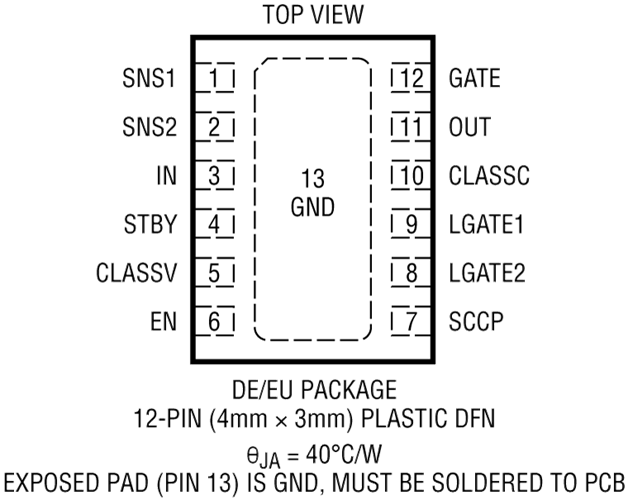The LTC4296-1 is an IEEE 802.3cg-compliant, five port, single-pair power over Ethernet (SPoE), power sourcing equipment (PSE) controller. SPoE simplifies system design and installation with standardized power and Ethernet data over a single-pair cable.
The LTC4296-1 is designed for interoperability with 802.3cg powered devices (PDs) in 24 V or 54 V systems. The LTC4296-1 delivers power using external, low drain-to-source on resistance (RDS(ON)), N-channel metal-oxide semiconductor field-effect transistors (MOSFETs), which minimize voltage drop and ensure application ruggedness.
High-side circuit breakers with foldback, analog current limit (ACL) provide controlled inrush and short-circuit protection. An optional low-side circuit breaker protects the negative output against backfeed faults and ground faults in nonisolated applications. PD classification via the serial communication classification protocol (SCCP) and maintain full voltage signature (MFVS) ensure that the full operating voltage is only applied to the cable when a PD is present. The SWx pins disconnect port power snubbers during detection and classification. PD initiated sleep and wake-up are supported. The WAKEUP pin supports wake-up forwarding. Telemetry, status and software control features are accessed via a serial peripheral interface (SPI) bus interface with packet error code (PEC) protection.
The LTC4296-1 provides a versatile SPoE, PSE solution for 10BASE-T1L controllers and switches and can easily be integrated with the Analog Devices, Inc., 10BASE-T1L transceiver portfolio, such as the ADIN1100 (physical layer, PHY), ADIN1110 (MACPHY) and ADIN2111 (2-port switch).
Key Features and Benefits
- IEEE 802.3cg-compliant for interoperability
- Active polarity correction with external MOSFETs reduces power losses
- Pin-programmable classification support provides flexibility over a wide voltage operating range
- Five independent PSE ports
- Wide input-supply operating range: 6 V to 60 V
- Adjustable source and return electronic circuit breakers
- 52 μA (typical) and 51 μA (typical) input supply current in sleep and disabled states, respectively
- Charge pump enhances the external, high-side, N-channel MOSFETs
- Supports SCCP with external microcontroller
- SPI bus interface with PEC
- Voltage, current, and temperature telemetry
- Per port power-good comparators
- PD sleep, wake-up, and wake-up forwarding support
- Available in 48-lead, 7 mm × 7 mm, QFN package
Applications
- Operational technology (OT) systems
- Building and factory automation systems
- Field instruments and switches
- Security systems
- Traffic control systems
Evaluation Board
The LTC4296-1/LTC9111 can be evaluated with the EVAL-SPoE-KIT-AZ.
Block Diagrams and Tables



